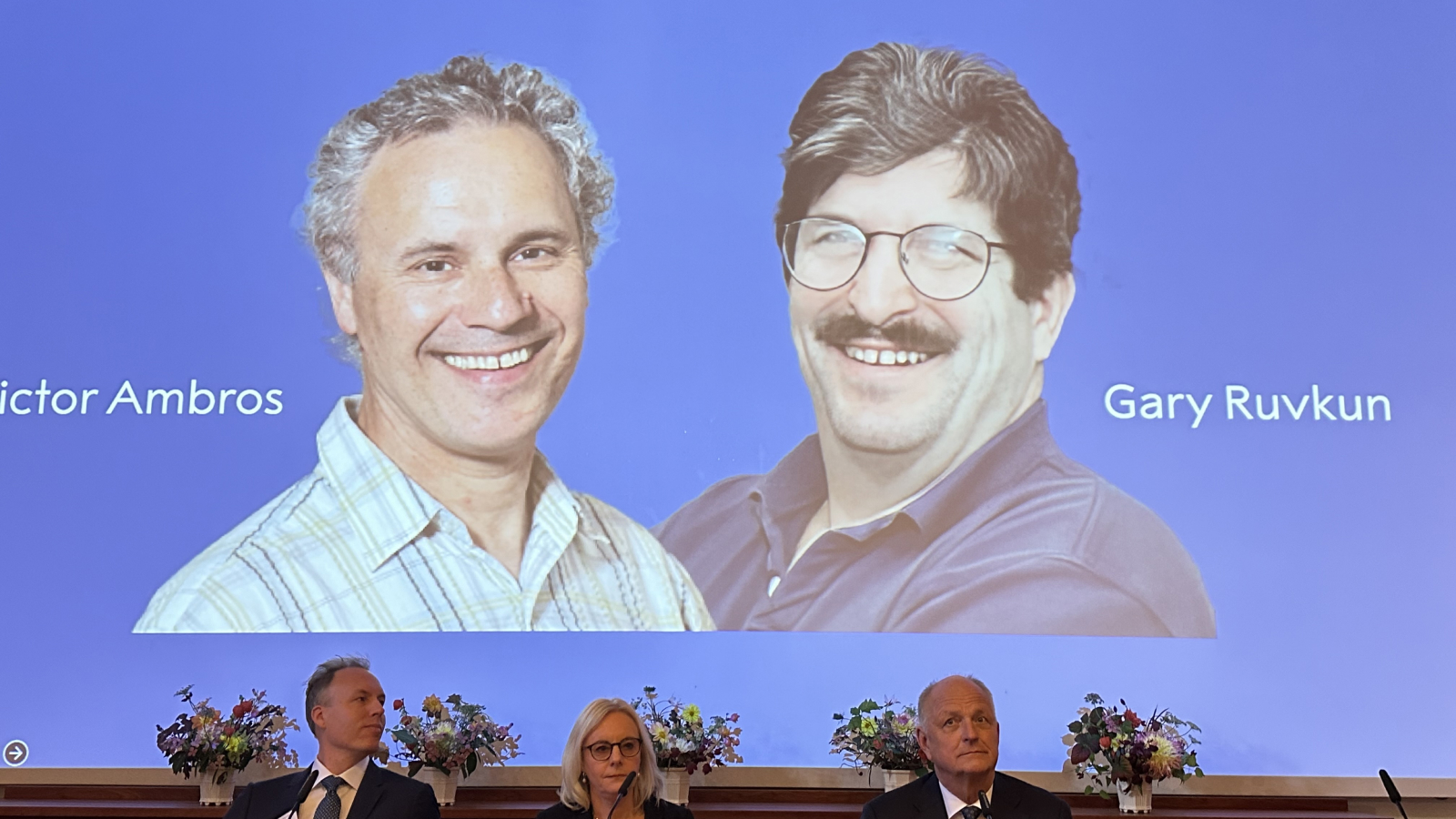
Two scientists have won the 2024 Nobel prize in physiology or medicine for their discovery of a class of tiny molecules called microRNAs, which play a crucial role in switching genes on and off.
Victor Ambros, a professor at the University of Massachusetts Medical School, and Gary Ruvkun, a molecular biologist at Massachusetts General Hospital and a professor of genetics at Harvard Medical School, will share the 11 million Swedish krona prize, equivalent to $1.06 million.
MicroRNAs fall under a broader umbrella of molecules called RNAs, which resemble DNA but contain only one "strand" of genetic material, rather than two twisted together. Ambros and Ruvkun first discovered microRNA and its potential role in gene regulation in 1993 while studying the development of the teensy roundworm Caenorhabditis elegans, a creature commonly studied by biologists.
Since then, the two collaborators and other scientists have shown that microRNAs are a key feature of the genomes of all multicellular organisms, including humans.
Related: Scientists just discovered a new way cells control their genes — it's called 'backtracking'
Thanks to their discovery, "researchers will have a much better understanding of how cells work," Olle Kämpe, the vice chair of the Nobel Committee for Physiology or Medicine, said at a press conference Monday (Oct. 7).
Currently, there are no medical applications for this work, but there may well be in the future, Kämpe said.
For instance, microRNAs may sometimes contribute to the development of cancer by regulating gene activity in ways that encourage the growth and spread of tumors. Some diseases stem from mutations in genes that code for microRNAs, such as congenital hearing loss and some eye and skeletal disorders. In addition, dysregulated microRNA activity has been found to be associated with the development of epilepsy.
"We don't yet have any way to treat these disorders where microRNA networks are perturbed, but we hope that someday that will come," Kämpe said.
Every cell in our bodies contains the same 20,000 genes or so that encode instructions to build proteins, the basic building blocks of life. However, different types of cells, such as muscle or nerve cells, have specialized characteristics and functions, so they require different supplies. Thus, to build the necessary proteins, distinct sets of genes are activated in each type of cell. This happens both during embryonic development and throughout an individual's lifetime, as cells take cues from within the body and the surrounding environment.
When a gene gets "activated" — meaning the cell is going to utilize its code — the DNA within that gene is first converted into small molecules called messenger RNAs, or mRNAs, via a process known as transcription. These molecules are later delivered to protein-construction sites in the cell, where they're used as templates to make proteins.
For a long time, scientists thought that gene activity was mainly regulated by specialized proteins that latch onto DNA, called transcription factors. These proteins had been discovered in the 1960s. Ambros and Ruvkun's discovery of microRNAs decades later turned this long-held assumption on its head.
In a series of lab experiments in C. elegans, the duo identified a microRNA that they dubbed lin-4. This molecule can bind to mRNA, preventing the production of its corresponding protein. In 2000, the scientists discovered another type of microRNA, called let-7, that appeared to be found throughout the animal kingdom.
Flash forward two decades and scientists have now discovered a wide array of microRNAs, including more than a thousand in the human body. These molecules are now lauded as essential governors of cell development and function.
"I am delighted to hear that Dr Ambros and Dr Ruvkun have jointly been awarded the Nobel Prize in Physiology or Medicine 2024," Janosch Heller, an assistant professor in biomedical sciences at Dublin City University, said in a statement shared by the U.K. Science Media Centre. "Their pioneering work into gene regulation by microRNAs paved the way for groundbreaking research into novel therapies for devastating diseases such as epilepsy but also opened our eyes to the wonderful machinery that is tightly controlling what is happening in our cells."
Ever wonder why some people build muscle more easily than others or why freckles come out in the sun? Send us your questions about how the human body works to community@livescience.com with the subject line "Health Desk Q," and you may see your question answered on the website!







